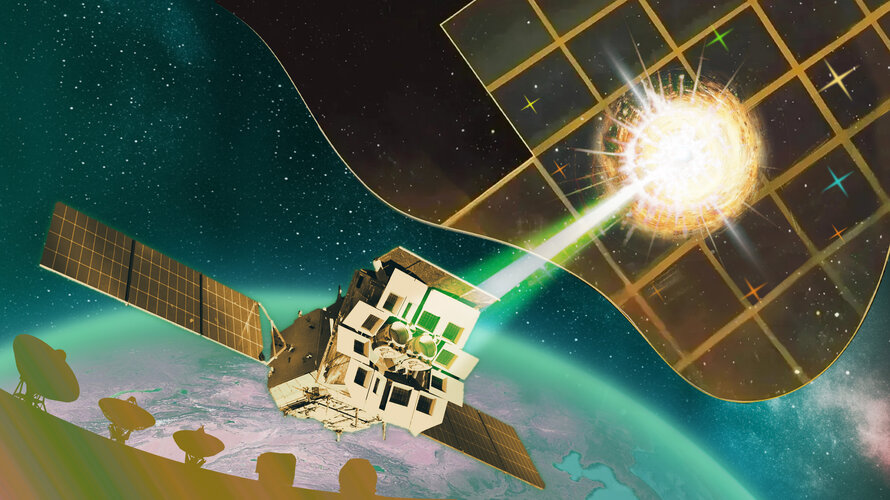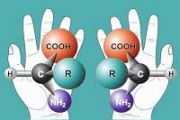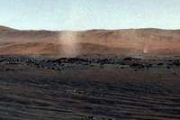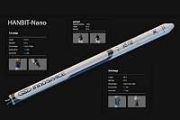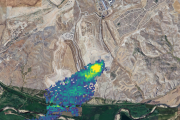
Copernical Team
Emory researchers explore heart cell growth in space to advance treatments on Earth
 A research team led by Chunhui Xu from Emory University has demonstrated that heart muscle cells can survive and grow in the microgravity environment of space. Published in Biomaterials, the findings suggest new avenues for creating more resilient heart cells that could enhance cell therapy-a technique that involves transplanting millions of heart cells to repair damaged cardiac tissue.
"T
A research team led by Chunhui Xu from Emory University has demonstrated that heart muscle cells can survive and grow in the microgravity environment of space. Published in Biomaterials, the findings suggest new avenues for creating more resilient heart cells that could enhance cell therapy-a technique that involves transplanting millions of heart cells to repair damaged cardiac tissue.
"T Astronomers thought they understood fast radio bursts. A recent one calls that into question
 Astronomer Calvin Leung was excited last summer to crunch data from a newly commissioned radio telescope to precisely pinpoint the origin of repeated bursts of intense radio waves - so-called fast radio bursts (FRBs) - emanating from somewhere in the northern constellation Ursa Minor.
Leung, a Miller Postdoctoral Fellowship recipient at the University of California, Berkeley, hopes eventua
Astronomer Calvin Leung was excited last summer to crunch data from a newly commissioned radio telescope to precisely pinpoint the origin of repeated bursts of intense radio waves - so-called fast radio bursts (FRBs) - emanating from somewhere in the northern constellation Ursa Minor.
Leung, a Miller Postdoctoral Fellowship recipient at the University of California, Berkeley, hopes eventua Finland signs on to Artemis Accords
 Finland became the 53rd nation to join NASA's Artemis Accords on Tuesday as the space agency continued to build global support for responsible manned exploration of the moon.
The signing happened during the Winter Satellite Workshop in Espoo, Finland. The country's Economic Affairs Minister Wille Rydman said Finland has participated and has had a long interest in space exploration and l
Finland became the 53rd nation to join NASA's Artemis Accords on Tuesday as the space agency continued to build global support for responsible manned exploration of the moon.
The signing happened during the Winter Satellite Workshop in Espoo, Finland. The country's Economic Affairs Minister Wille Rydman said Finland has participated and has had a long interest in space exploration and l Researchers create AI tool for realistic satellite images of climate impacts
 Researchers from the University of Granada (UGR) have unveiled a major advancement in using artificial intelligence to generate realistic satellite images depicting the impacts of climate change. This innovation holds promise for better communicating the consequences of environmental shifts, such as flooding and reforestation, to policymakers and the public.
The project, spearheaded by Nat
Researchers from the University of Granada (UGR) have unveiled a major advancement in using artificial intelligence to generate realistic satellite images depicting the impacts of climate change. This innovation holds promise for better communicating the consequences of environmental shifts, such as flooding and reforestation, to policymakers and the public.
The project, spearheaded by Nat ORBIMARS: A proposed terminology for Mars orbital operations
 In the evolving lexicon of space exploration, the term "cislunar" has become fundamental to describing Earth-Moon operations, encompassing everything from satellite deployments to lunar gateway missions.
As humanity extends its reach to Mars, we face a compelling need to define and characterize the complex orbital environment of our neighboring planet.
The introduction of ORBIMARS re
In the evolving lexicon of space exploration, the term "cislunar" has become fundamental to describing Earth-Moon operations, encompassing everything from satellite deployments to lunar gateway missions.
As humanity extends its reach to Mars, we face a compelling need to define and characterize the complex orbital environment of our neighboring planet.
The introduction of ORBIMARS re Getting the most out of cosmic maps
 A University of Michigan-led research initiative is paving the way for cosmology to fully utilize the capabilities of telescopes and instruments tackling the universe's biggest questions.
The project highlights a novel computational method that extracts significantly more information from cosmic maps depicting the clustering and distribution of galaxies across the universe. Such maps are c
A University of Michigan-led research initiative is paving the way for cosmology to fully utilize the capabilities of telescopes and instruments tackling the universe's biggest questions.
The project highlights a novel computational method that extracts significantly more information from cosmic maps depicting the clustering and distribution of galaxies across the universe. Such maps are c Flexential Links Up with Lonestar to Support First Commercial Space Data Center
 Flexential, a prominent provider of secure and adaptive data center solutions, has joined forces with Lonestar Data Holdings Inc. (Lonestar), a leading innovator in lunar infrastructure and Resiliency as a Service (RaaS). This collaboration supports the launch of Freedom, Lonestar's second data center on the Moon, which will be deployed via a SpaceX Falcon 9 rocket by Intuitive Machines. This ef
Flexential, a prominent provider of secure and adaptive data center solutions, has joined forces with Lonestar Data Holdings Inc. (Lonestar), a leading innovator in lunar infrastructure and Resiliency as a Service (RaaS). This collaboration supports the launch of Freedom, Lonestar's second data center on the Moon, which will be deployed via a SpaceX Falcon 9 rocket by Intuitive Machines. This ef Top Beijing official urges Musk to deepen ties with China: state media
 Chinese Vice President Han Zheng met with tech tycoon Elon Musk and urged US firms to "seize the opportunity" to deepen economic ties with China, Beijing's state media said Monday.
Han - who is set to attend the inauguration of US President-elect Donald Trump later on Monday - met with Musk and other American business representatives on Sunday, Xinhua said.
The world's richest person,
Chinese Vice President Han Zheng met with tech tycoon Elon Musk and urged US firms to "seize the opportunity" to deepen economic ties with China, Beijing's state media said Monday.
Han - who is set to attend the inauguration of US President-elect Donald Trump later on Monday - met with Musk and other American business representatives on Sunday, Xinhua said.
The world's richest person, Astronauts to Collect Microbial Samples from Space Station Exterior
 Astronauts aboard the International Space Station (ISS) are preparing for a unique task during upcoming spacewalks-collecting microbiological samples from the station's exterior. This activity is part of the ISS External Microorganisms experiment, designed to investigate whether microorganisms from the station's interior are vented into space, how far they can travel, and their survival capabili
Astronauts aboard the International Space Station (ISS) are preparing for a unique task during upcoming spacewalks-collecting microbiological samples from the station's exterior. This activity is part of the ISS External Microorganisms experiment, designed to investigate whether microorganisms from the station's interior are vented into space, how far they can travel, and their survival capabili Einstein Probe detects puzzling cosmic explosion
